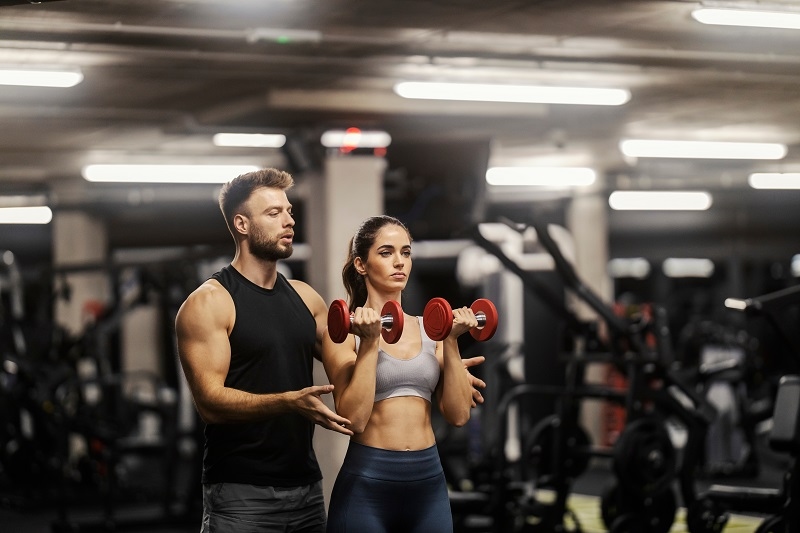
resistance training doesn’t mean you have to bench press your bodyweight or flex in the mirror like it’s a Marvel audition. It simply means building strength by working against resistance. And no, that resistance doesn’t always have to be iron plates. Sometimes it’s bands, bodyweight, or that stubborn gallon of water you keep forgetting to drink.
This guide? It’s for the newbies. The “where do I even start?” crowd. The “I tried YouTube but nearly pulled something” folks. Whether you’re hitting the gym or sweating it out next to your couch, we’ve got your back—and your biceps.
So let’s cut the fluff and talk real home workouts, gym tips, and how to actually get stronger without hating the process.
Here’s the thing—resistance training is like compound interest for your body. Do it right, and the results keep compounding.
We’re talking:
And, yeah, clothes that fit better
And for the record: it’s not just for bodybuilders. It’s for moms, desk-jobbers, teens, retirees—literally everyone with muscles (which is… everyone).
Let’s debunk this now: home workouts work.
Especially in 2025, when adjustable dumbbells, resistance bands, and virtual coaches are everywhere.
The trick? Structure. You don’t need fancy machines—you need consistency, proper form, and a plan that doesn’t make you want to cry (or quit).
So whether you’re in a studio apartment or a full garage gym, we’ve got home workouts for beginners that’ll fire up those muscles and leave you wondering why you didn’t start sooner.
If you’re brand new to all this, don’t overcomplicate things. You’re not trying to PR your deadlift—you’re trying to build a solid foundation.
Here are the five foundational movement patterns you should hit in every beginner gym workout plan:
These hit every major muscle group and prep your body for real-life movement—whether it’s lifting groceries or surviving leg day.
Before you go wild on Amazon, here’s what you actually need for solid dumbbell home workouts:
That’s it. No magic gadgets. No overpriced monthly subscriptions (unless you're into that). Just gear that lets you work.
Warm-Up (5 mins)
Circuit (Repeat 3x)
Cool Down
Stretch your quads, hamstrings, shoulders, and take a few deep breaths. You earned it.
Short. Sweet. Spicy (in a “I feel that tomorrow” kind of way).

Walking into the gym for the first time can feel like stepping into a CrossFit battlefield. You’re dodging battle ropes and wondering why that guy’s yelling at a barbell.
But here’s your reality: no one’s judging you. Everyone’s too busy worrying about their own form, pump, or playlist.
So for your beginner gym workout plan, skip the intimidation and focus on machines and free weights you understand. Machines are great for learning movement patterns safely, and dumbbells force your stabilizers to engage.
Try this:
Day 1: Full-Body Strength
It’s basic, effective, and scalable. Add weight or reps as you get stronger.
This isn’t negotiable. Doing squats with garbage form is like brushing your teeth with a fork. It’s not helping—and it might hurt.
Here’s your cheat sheet:
The internet is full of form tutorials. Use them. Or better yet, hire a coach—even for a session or two. Solid form now prevents injuries later.
On a Related Note: Top Weight Lifting Shoes for Better Stability and Gains
Spoiler: not every day.
Start with 2–3 resistance sessions a week. Alternate upper and lower, or just go full-body each time. Recovery matters just as much as effort.
Your body needs time to repair, grow, and not hate you.
Here’s a basic schedule:
You’re not lazy. You’re being smart.
If we had a dollar for every time someone said this…
Let’s be clear: lifting weights won’t make you bulky overnight. Gaining serious muscle takes years, intentional programming, and usually a calorie surplus.
What resistance training will do:
Basically, it does all the stuff you probably do want. So stop fearing the dumbbells. They’re your friends.
You can’t out-train bad habits in the kitchen—or three hours of sleep a night.
For real results:
Also? Track your progress. Strength. Reps. Energy. How your clothes feel. The wins are everywhere if you look for them.
Here’s a truth bomb: motivation is a liar. It shows up loud, disappears fast, and leaves you mid-set wondering why you’re doing squats on a Tuesday.
That’s when habit saves you.
Build a system:
And remember: showing up matters more than going hard.
Muscle weighs more than fat, so don’t freak if the number doesn’t budge. Track reps, sets, how your clothes fit, and how you feel. That’s real progress. A stronger grip, better posture, or finally nailing that push-up? Celebrate that. Numbers matter—but they’re not the only win.
You Might Like This: The Best Cardio Machines for Home Workouts: A Buyer's Guide
There’s no perfect time. No magic workout plan. No “right” number on the scale.
There’s just you. Your effort. Your consistency. And the small daily choices that add up.
Resistance training isn’t about punishment—it’s about empowerment. It teaches you that you can lift things you once couldn’t. That you can carry groceries without pain. That your body is strong and getting stronger.
So whether you’re sweating it out with home workouts for beginners, testing the waters with some dumbbell home workouts, or navigating your first strength training day at the gym—be proud.
You started. You’re still here. And that matters more than you think.
This content was created by AI